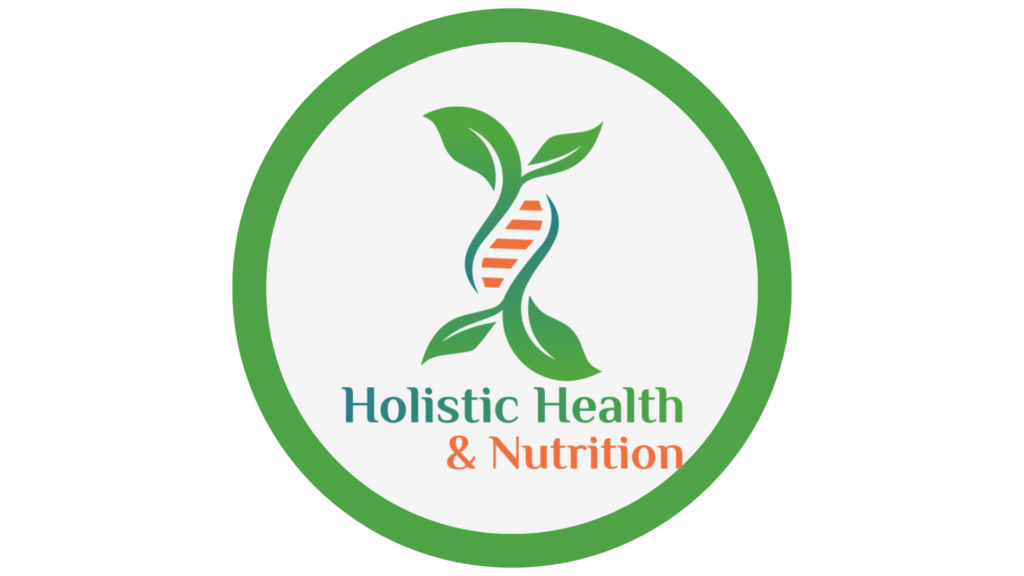Welcome to
Holistic Health and Nutrition, where transformation begins
ADVANCING MEDICINE WITH FOOD AND NUTRIENTS
Holistic Health and Nutrition
Reclaiming Your Health
Why settle for conventional healthcare plans when you can access personalized care that caters specifically to your needs and preferences?
We are part of The Solution, Not The Problem!
Love Food! Save Money! Enjoy Your Happy Life!
If you’re searching for solutions to your health concerns, then you’ve come to the right place. Here, at Holistic Health and Nutrition you will find a variety of services that can help you achieve improved physical and mental well-being.
Your experience at Holistic Health Nutrition will be etched in your heart forever.
“Transforming health with a dash of green magic! Our mission is to make wellness delightful, nourishing your body while caring for our planet. Embrace a journey where vibrant living meets sustainable choices – let’s thrive together!”
welcome to
Holistic Health and Nutrition, where transformation begins
ADVANCING MEDICINE WITH FOOD AND NUTRIENTS
If you’re searching for solutions to your health concerns, then you’ve come to the right place. Here, at Holistic Health and Nutrition you will find a variety of services that can help you achieve improved physical and mental well-being.
Your experience at Holistic Health Nutrition will be etched in your heart forever.
“Transforming health with a dash of green magic! Our mission is to make wellness delightful, nourishing your body while caring for our planet. Embrace a journey where vibrant living meets sustainable choices – let’s thrive together!”
Why settle for conventional healthcare plans when you can access personalized care that caters specifically to your needs and preferences?

More than 1 billion people worldwide are obese – 650 million adults, 340 million adolescents and 39 million children.
It is estimated by 2025 approximately 167 million people – adults and children – will develop noncommunicable diseases (NCDs), such as:
- Type 2 diabetes
- Cardiovascular disease
- Hypertension
- Stroke
- Various forms of cancer
- Mental health issues
Food for thoughts!
The Dangers of Modern Diet!
How Can the Wrong Food Mess With Our Body?
Chronic Health Problems in Children: asthma, diabetes (Prediabetes, Type 1 diabetes, Type 2 diabetes), obesity.
In England 1 in 3 children leaving primary school are overweight or living with obesity with 1 in 5 living with obesity.
2017-2020 The prevalence of obesity was 19.7% and affected about 14.7 million children and adolescents (USA)
Obesity is preventable. Holistic Health and Nutrition
7 steps of healing journey
7 steps of healing journey
7 steps of healing journey

Why choose Holistic Health and Nutrition Clinic?
Because You Are Special
Believe it or not - there is no one else that is just like you. Your physical appearance, your voice and personality traits- your habits, intelligence, personal taste- all these makes you one of a kind. Even your fingerprints distinguish you from every other human being- past, present or future.
Are you struggling with chronic health conditions such as:
- obesity
- diabetes type 2
- constipation
- low immune system,
- osteoarthritis,
- allergies, and many more and feeling like there’s no solution in sight?
Have you been told by your doctor, your family, or your friends that gaining weight, foggy brain and “senior moments”, sluggish immune system, aches, and pains, feeling sad or maybe anxious or depressed are results of ageing?
How often have you said:
“My disease runs in my family” and you cannot do anything because you have poor genes?
How did people convince you that aging means deterioration
Do you want to improve your overall wellness and quality of life?
Keep your well-being in mind and choose a healthcare plan that resonates with you.

Excellence Research
Holistic Health Nutrition offers evidence-based clinical nutrition consultation, education, and holistic nutrition programs to address the root cause of your chronic conditions, not just the symptoms. Our approach considers your physical, emotional, mental health, medication an other factors to help you achieve optimal well-being. We believe in a personalized plan that works for your lifestyle and goals. Our goal is to empower you with the knowledge and tools

Chronic Conditions
Our personalized programs are created with your health in mind. Whether it's managing chronic conditions like obesity, type 2 diabetes, and gastrointestinal issues, or boosting your immune system and balancing hormones, we've got you covered! Our delicious meal plans are tailored to your specific needs, so you can enjoy the journey without feeling overwhelmed or deprived.

Wellness Retreat
Experience the transformative power of Wellness Retreat, where you can escape from the daily stressors and embark on a journey of self-discovery. Gain profound clarity as our retreat helps you understand how making specific dietary shifts can revolutionize your health and well-being. Join us for an immersive and revitalizing experience that is sure to leave you feeling refreshed, rejuvenated, and ready to embrace a healthier lifestyle.
Care for Your Family Starts Here
My commitment to you is to provide the best care possible, from nutrition counseling and fitness coaching to preventive health screenings and wellness guidance.
Together, we can work toward creating lasting positive lifestyle changes that will benefit your physical, mental and emotional wellbeing for years to come. Thank you for the opportunity to serve you!

Hi, I am Maddie
Your clinical nutritionist at Holistic Health Nutrition.
When selecting a nutritionist it is important to look for someone Who has experience working with individuals with similar needs or goals as yours. It is also important to consider whether you prefer meeting in person or would prefer working with someone online if available in your area. Finally it is important to find someone who you feel comfortable talking openly with about your dietary habits so that together you can come up with an effective plan for achieving your health goals.
You can read my healing story here.
Happy Clients
“It takes a special kind of person to become a successful clinical nutritionist,” says Dr. Smith. “You need passion for your field combined with strong scientific knowledge and interpersonal skills that allow you to successfully connect with your patients.”
15 min Free Call
Our 15-minute consultation is completely free, so you can take the first step towards a healthier, happier you without any fees.
Gut - The inside story of our body's most under-rated organ
Dysbiosys or altered microbial compositions. Dysbiosys have been linked to the disruption of mucosal barriers and an increased inflammatory response – conditions that could potentially trigger systemic diseases such as obesity, inflammatory bowel disease (IBD), celiac disease, food allergy, autoimmune diseases, type 2 diabetes, allergy, asthma, metabolic syndrome, cardiovascular disease, atopic eczema, and chronic diarrhoea.
Chronic fatigue syndrome, Crohn’s disease, depression, diabetes fibromyalgia, food sensitivities, heart disease, irritable bowel syndrome, inflammatory bowel disease multiple sclerosis polymyalgia rheumatica Raynaud’s Disease scleroderma Sjögren’s Syndrome, multiple autoimmune diseases ulcerative colitis vasculitis allergies, alopecia areata, Alzheimer’s disease and autism are strongly linked with Leaky gut:— Leaky gut affects the whole body.
Sometime you can have the healthiest diet in the world, if you have gut issues, you might suffer of Malabsorption and maldigestion. These both conditions go hand to hand, reducing the supply of vitamins, minerals, proteins and antioxidant your skin and your body needs to thrive. You gut bacteria make nutrients. For example Vitamin B7 known as biotin is essential for cell renewal and healthy skin and nails. Skin problems such as acne, dry skin, eczema, open enlarged pore and more? These are signs of digestive problem
SIBO is an abnormal overgrowth bacteria in the small intestine and is substantially under-diagnosed.
SIBO causes vitamin deficiencies, specifically B12, weakness, sensory ataxia, and paresthesia. Severe Vit D deficiency from malabsorption can present with peripheral numbness, hand and feet paresthesia, and muscle cramps from hypocalcemia.
SIBO has been implicated in developing nonalcoholic fatty liver disease and hepatic encephalopathy
Irritable bowel syndrome, intestinal motility disorders, and chronic pancreatitis are the most predominant cause of SIBO and account for 80-90% of cases.
Symptoms:
- bloating,
- diarrhoea,
- malabsorption,
- weight loss and malnutrition,
- joint pain,
- fat gain and inability to put on lean mass,
- chronic fatigue,
- Fibromyalgia,
- rashes and skin disorder, wrinkles and dry sports, acne, eczema, psoriasis, atopic dermatitis,
- asthma,
- depression, anxiety poor mod.

Less recognized or less discussed is that human beings are also bioelectromangnetic beings.
Exposure to EMR: high frequency ionizing radiation and lower frequency non ionizing radiation lead to Electromagnetic Hypersensitivity (EHS)
Nutrition can reduce radiation exposure, block tissue uptake, and provide antioxidant protection, and support repair, detoxification and immune mechanism.


Toxicity
As modern lifestyles become more and more dependent on electronic devices, continuously exposure to “dirty energy”, radiation exposure during the diagnosis and medical treatment, irradiated food and more. Therefore, it is vital for our wellbeing to be aware of the impact that external electromagnetic radiation (EMR) can have. Understanding bioelectromagnetism will provide us the powerful knowledge in protecting ourselves from any health risks associated with EMR exposure.

Medication
Nutrition depletion is caused by your daily medication.
Proton pump inhibitors, opioids, gastric bypass, colectomy, and dysmotility are factors that can lead to SIBO. For example: Diuretics are drugs that help the elimination of sodium (salt) and water from the body, as results will lower blood pressure.
However, among water and sodium, other minerals and vitamins are eliminated out of the body, including vitamin C, Calcium, potassium and magnesium, all of which are involved in controlling blood pressure! A low level of potassium if not monitored and replaced accordingly, increases the risk for heart rhythm disturbances that can be serious life-threatening situations.

Medical Radiation
Radiation therapy is very well for of penetrative properties that cause cell and organ damage, leading to cardiac complication, thyroid cancer, renal dysfunction, GI dysfunction, hypertension and severe anemia. Food irradiation Dirty electricity: exposure to low-frequency EMF X Rays and CT scans are likely a major cause of cancer mortality and ischemic heart disease (according to radiation expert John W. Gofman, (electromagnetic frequency): cell phones, plasma television, dimmer switch, wireless outers
Therefore is not about the age.
It is loss of function at the cellular level.
your body is in distress.
You are more than welcome to ask any questions, and we are happy to answer.
Check What Our Clients Say
Ready to make YOU a priority?
Kay Beckles
Firstly I’d like to say Thank-you.
I had been suffering with really dry and cracked skin on the palms of my hands. I was referred to the Dermatology Clinic from my GP, I was given steroids and moisturising creams. I used these for a while but nothing happen the symptoms stayed the same and even became worse.
I spoke to Maddie and she explained the nutritional needs of our bodies, and gave me suggestions of vitamins and nutrition’s that I should start to take.
After showing her my hands she gave me an ointment to moistures with and a liquid solution to rub into my hands. I used these two together and within a few weeks of applying the medicine twice a day my hands are now back to normal.
I would highly recommend you Maddie, you are very knowledgeable and your products are fantastic.
Thank You
With Kind Regards,
Kay Beckles
Daniel
I can't thank enough Madelena for the change she brought into my health and body appearance. I've lost weight following Madelena's programme and my energy level have improved considerably. She created a personalised diet for my health issues which helped me to lose 10 kg and also helped me avoid diabetes, for which l am forever grateful. Working as a photographer means to be always on the go, hence eating disorganised and most of the times quickly and this habits determined the extra kilos l was carrying in my body. Madelena taught me the "mindfulness eating" of which l was never aware. I highly recommend Madelena and l can guarantee she will make the difference in your life. Thank you for being so supportive, for your wisdom, for your encouragement and guidance, but most of all for your extended knowledge as a clinical nutritionist. With warmest regards, Daniel, London, 2019
Steve S.
My name is Steve S. and I have had surgery to remove BCC skin cancer from my scull and neck /upper chest area. Each time Madelena has been very professional and gentle. She has a very calming nature and made me feel at ease as well. She also gave me useful advice on what to apply to wounds and vitamins to take.
Mish's mum
Loana
Recomand Maddie Tapliga pentru ca pe mine m-a ajutat foarte mult. M-a invatat ce si cum sa mananc ca sa scad in greutate, cum si de care vitamine si antioxidanti sa iau. Am invatat de la ea numai lucruri bune si sunt foarte fericita ca stiu ca am la cine sa apelez cand am o problema care nu tine numai de greutate ci si de frumusetea interioara si exterioara. Un om deosebit, o răbdare de neînchipuit, tot timpul prezenta la orice întrebare as fi avut! Recomand cu toată încrederea pentru ca rezultatele clar o sa apara, Maddie vine cu planul dar tine doar de tine dacă te ți de el! Recomand 100%. Ioana Virgil
Mark
Madelena has been my nutritionist since February, and I feel extremely grateful to have met her. She is a kind, welcoming and has vast knowledge about her work.
For many years I have suffered with medical issues. one of my biggest challenges I was having was with my feet and not being able to walk properly as I was always in constant pain.
Doctors where only able to prescribe an assortment of medication which only masked the pain and led to more issues.
From meeting Madelena, she was able to regularise my eating habits, advise me on what and when to eat and certain supplements and vitamins to take.
At first it was very difficult to stop eating the foods I’ve enjoyed for most of my life, but once again, she was understanding of this and worked with me to cut them down and help me overcome this.
Within a month I could feel the difference this was having on me. Movement was becoming more easier; my weight gain was reduced, and my overall well-being was improved. Although, I still take medication at present, it is dramatically decreased making the associated issues I was experiencing from the medication cease.
I am so grateful to Madeleina as she has given me back hope.
If you are thinking about using her services, I totally recommend her
Afize Ibram
Hello and, a big THANK YOU to Maddie!
Back in May, I have been in touch with Maddie, because I need help with losing weight. To be honest, I hesitate a little bit at the beginning, because I don’t trust anyone who is working in hospitals, GP etc. This is because all are pushing you to take tablets with side effects, making you worse than you are or have been. With recommendations received from this lovely lady, I have been able to change my eating style, my meals, my kitchen, my food, and to lose weight as well!
Which no hospital or GP or any other person will be able to give you the right information and the right treatment!
What I can say is: even if my body was a bit (more) lazy in digesting, Maddie made this happened!
Her treatment style is based on natural plants and natural medication. With her natural tea plants suggestion, vitamins, and meal plan I am able today to lose weight, breathe normal, and act like a normal person. I am losing slowly in weight because I have no time for more exercising out, as my job is in front of a computer on a daily basis, but I continue losing doing no more effort and eating normal as with Maddie’s meals recommendation you can become easily vegetarian.
So, with the ‘’eat and lose’’ weight motto, I am not using any kind of tablets, or medication, no surgery or other stupid ideas suggested by medical ‘’professionals’’ who practically don’t care about your health and are there to make you worse and take your money….
If I am recommending? Yes, with a big YES, I am recommending you this lovely lady, if you are in the pre-stage of obesity, if you have any problem with the thyroid, or any kind of health problem you have, be in touch without any hesitation and ask if she can help you as well. I am 100% sure she will not let you down!
Dieburg ⭐⭐⭐⭐⭐
When stress and disease leave their extremely negative mark on one`s body and psychical profile, this visibly happening in only one year`s time, one desperately searches for a valuable fitotherapist on the internet ,on various sites; this was ,indeed, my, case.
Due to the fact that the massive and mostly owerwhelming amount of information and products in this field, I was put in an extreme situation: I did not know what to choose, WHAT WAS GOOD in my case, how to proceed, so as to get well again.
I only knew that I wanted something good for my health. As simple as that.I needed a natural and safe medication and therapy., regarding my nutrition and generally ,my health.
I had the chance to find a special fytotherapist on the internet, in the person of Mrs. Madelena Tapliga, whose site and its well conceived and structured information and content fully reponded to my wishes and requests..I thorougly studied Madalena`s site and especially her products which corresponded to my personalized heath constelation.
Madelena`s prompt reaction to my questions in my case proved to be the right choice.We constantly got in touch, she dedicated her time and patience so as to get the needed information for my case.
She dedicated her time, competence and qualified knowledge so as to help me efficiently; not only has she conceived a personalized plan for me, but she offered various food receipes so as to strenghten my immune system. And this was my first issue to solve regarding my heath.
Last year in November , I got a severe cold, which gave opportunity to a detailed check, a C.T.;the result was desastruous for me. It was that a tumor which caused severe problems to my health and it seemed to be a rather “old” tumor. I had cancer.I was put into hospital and I underwent a complicated surgical operation on both sides of my throat.The extracted tumors had about 5 cm each.
A series of exhausting radiation sessions were also prescribed and led, in a period of about 6 weeks, intensively.
I was at the end of my strenght, power , hope.
Madelena supervised me , prescribed and prepared ointments and medicines, because my skin degenerated extremely during the radiation/rays process.
She constantly asked for a rigorous feed-back , also visual feedback, so as to supervise and control the evolution and advancement of my , meanwhile, improving heath, especially the affected areas.
Madelena also gave me advice and support in dealing with my stress, recommending and preparing the proper personalized products for me: soaps, , salts, ointments; products that I used on the various regions of skin and body. She gave me , in my opinion ,a holistic treatment, from which I had significanr benefits, actually, more than I hoped for.
After several sessions with her and the constant exchange between us, I observed the improved state of the affected regions, and not only. If I were to evaluate in figures from 1 to 10, she brouht me from a stage of 1 to a stage of 9 to 10; and still going onwards to an optimum of result concerning my health.
Words are empty, words can only illustrate our collaboration; what actually Mrs. Madelena Tapliga did and still does so as to give me her support and assistance in my case is priceless.
I owe her my appreciation and high consideration for her competence, dedication and consciousness, her professional skills , attitude, patience and compassion which are genuine and , to my mind, the ones who have the chance to be in her hands cand count on a radical and hoped for healing.
I recommend Mrs. Tapliga to other persons who are confronted with extreme health issues, knowing that she fully implies herself , achieving unhoped goals, giving hope and the premises for regaining the health which we all strive for.
Andreea R. ⭐⭐⭐⭐⭐
So let me tell you a bit about myself…. I’m far from being the “perfect body “type of person…. But that’s OK… you know why?? Because I’m on my way to achieve the body that I always wanted to have. And I’m confident about it, because after 3 years of trying different teas, shakes, pills, even going to the gym like crazy with no results, I finally decided on March 2019 to contact this amazing person that have changed me, made me more confident and strong.
So the funny thing is that I had maddie on my friend list on facebook for a while, but I was so skeptical about this “nutritionist “ business because I could see on my news feeds everyday more and more ladies making adverts regarding slimming products, and I was just so sick of them, until one day when maddie posted something…. A picture with different body types, describing each one of them and the factors that influence how the fat is being stored and why we don’t lose the fat, no matter how hard we try While I was reading her post, I felt like she wrote about me.. I found myself in her post… and in that moment I decided to text her..
She replied to me and that evening we had a long phone call, and you can not imagine the passion she was talking about what she is doing, and how much she knows about nutrition and wellbeing. I think this was on the 1st of March and we decided to have my first consultation on the 17th of March. She told meanwhile to keep a journal where I write what I eat and drink everyday and the times, to weight myself and every morning to take my body temperature. She told me that after the consultation I will have to do a detox treatment for few days, so she recommended me to drink some natural teas everyday (sting nettle, Mary gold and dandelion tea).
After our phone conversation I ordered the loose leaf teas, I started my journal, and my first day when I weighted myself I was 92 kg and I’m 1.74. When I went to see her on the 17th of March I was so surprised to see that I was down to 89 kg in 2 weeks, just by adding the tea to my daily routine.
During the consultation she asked me about my medical history, any intolerances or allergies, she told me that with patience and will power, I will reach my goal.
She crafted a 3 days detox plan for me, with easy to make recipes (and soooooo yummy). Everyday she was checking up on me to see how I’m doing and to support me, after the 3 days detox she sent me one week plan to what I have to eat, drink and food recipes,and so on until I reached my 4th week of my new lifestyle,and I went for my follow up appointment. You can not imagine the feeling when I saw that I was down to 82 kilos and lost so many centimeters from my waist, tights and arms.
Oh, not to forget…. She is not only an amazing nutritionist, but also she is amazing in reflexology, tapping and lymphatic drainage massage. After every session, I feel more relaxed, more happy, confident and ready for my next challenge, as after every 4 weeks, she makes me a different plan, so my body will not get used to only a certain regime.
Now, after 3 months since I met this amazing person, I can proudly say that from size 16 I’m down to a size 12 and I weight 78 kg . And all this without to starve myself, without to spend loads of money on tablets, teas or silly diets. Just a healthy, easy and happy lifestyle.
Thank you for helping me the person I am today beautiful soul!!!
Kristina Argint Londra ⭐⭐⭐⭐⭐
Salutare tuturor,
Astazi voi povesti un pic despre mine si fiul meu special. Sunt femeie sotie si mama unui baietel special pe nume Leonardo, care este un adevarat luptator. De 4 ani de zile ma confrunt zi de zi cu o situatie dificila in viata noastra numita autism. Cand am descoperit pentru prima data aceste elemente de autism, Leonardo avea in jur de 2 ani si toata lumea lui dar si a mea, brusc s-a intors cu fundul in sus. Nu aveam nici o idee ce este autismul, cum se trateaza si ce pot eu face sa imi ajut copilul sa creasca sanatos si fericit. M-am documentat online, am incercat sa merg la diferiti medici,dar, nimeni nu imi oferea o solutie buna pentru fiul meu.Unicul lor raspuns era terapie si atat. Am intrat in contact cu alte mamici care au aceiasi problema si care au incercat diverse protocoale terapii, medicamente. Unele mamici au avut rezultate dar cum fiecare copil este diferit nu orice medicament sau aliment ii va face bine si copilului meu. Timpul a trecut si baiatul meu a implinit frumoasa virsta de 5 ani iar eu nu am incetat niciodata sa sper ca se va intimpla o minune, se va insanatosi,va vorbi, va avea si el un regim alimentar mai bogat in alimente sanatoase pentru ca stim bine ca acesti copii cu autism au o problema mare cu mincarea. Refuza sa manince,iar eu ca mama daca copilul meu nu sa alimetat la timp sau refuza mincarea devin ingrijorata. Pe Maddie Ancuta o cunosc din mediul online de cativa ani buni ii urmaream cu drag toate postarile si o simpatizam am facut chiar si cateva comenzi de la ea sapunuri,creme, foarte bune facute toate de ea insasi, dar, niciodata nu m-am gandit ca ea ar putea fi salvarea noastra a mea si a fiului meu. Ne-am salutat si i-am vorbit despre marea mea problema autismul. Din acel moment Maddie ma intrebat clar, de ce am intirziat atat de mult si nu am apelat la ajutorul ei??? Si ca inca nu este nimic pierdut dar trebuie sa actionam rapid zis si facut am programat o întîlnire la mine acasa si i-am facut cunostinta cu minunea mea de baiat. Iar din acea zi Maddie, cu multa grija si rabdare m-a ascultat si a dezvoltat un plan de nutritie creat special pentru nevoile copilului meu,incluzînd mincare sanatoasa, probiotice, vitamine fructe si legume, ceea ce pana atunci nu făceau parte din alimentatia fiului meu pentru ca nu am fost învățata de nimeni pana acum care alimente sunt bune pentru copil si care ii fac rau. Eu stiam doar atat: daca copilul maninca atunci si el e fericit si eu sunt fericita. Total gresit pentru ca el minca si maninca doar 3-4 feluri mincare. dar din tot ceea ce minca el nimic nu ii oferea un aport bun de vitamine bune. Mereu alegea sa manince paine biscuiți, dulciuri, lactate…Si de la ele devenea hiper activ, agresiv..Si epuizat. Paine maninca si in prezent, dar moderat…in rest de cand am aplicat si ascultat cu atenție sfaturile lui Maddie copilul a devenit mai activ concentat.Intelege mai bine, încearcă să socializeze, sa vorbeasca si accepta sa guste si alte alimente care cu 2 luni in urma nici in ruptul capului nu dorea să le vadă.
Tot ce pot sa spun este ca ii sunt recunoscatoare lui Maddie pentru toata grija si rabdarea si sfaturile care le-am primit de la ea. Este o doamna inteligenta, si calda care ofera atentie maxima oricarui pacient.
O recomand cu toata increderea pe Maddie Tapliga. Inconjurati-va de oameni buni inteligenti de la care aveti ce învața. Pretuiti acesti oameni care sunt o binecuvintare de la Dumnezeu..mulțumesc Maddie ❤
Looking For An Accurate And Reliable Blood Test In UK?
How useful was this post?
Click on a star to rate it!
Average rating 5 / 5. Vote count: 2
No votes so far! Be the first to rate this post.
